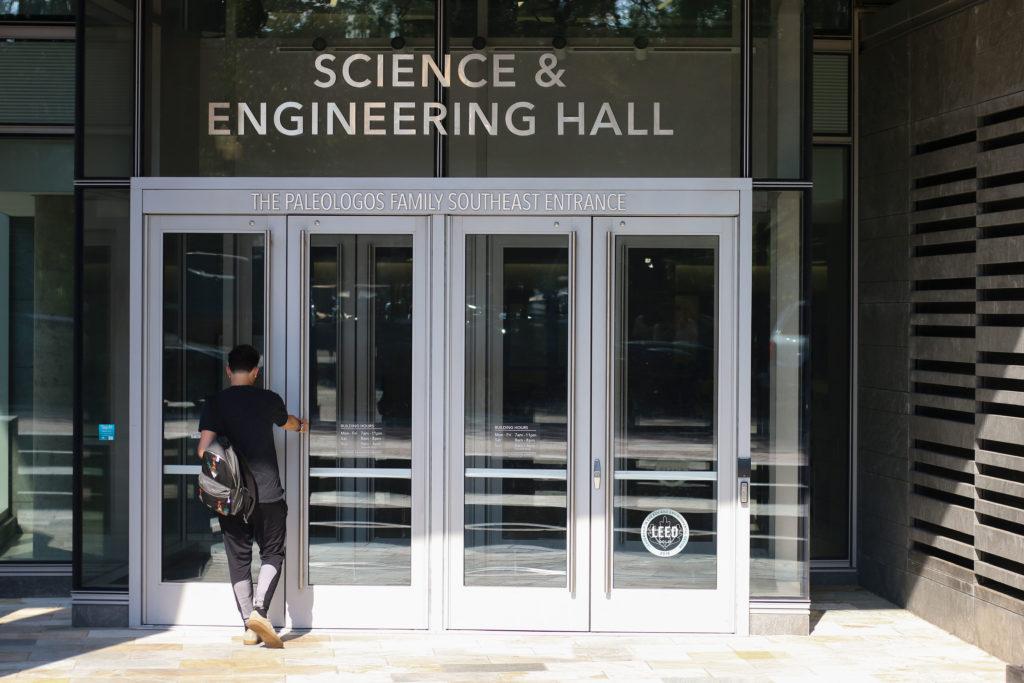Updated: Monday, Jan. 30, 2023, at 2:42 p.m.
The amount of money awarded to University research projects from the National Institutes of Health has dropped by 28 percent in the past three fiscal years, a decline worth roughly $32 million.
The NIH granted GW less than $80 million for research last fiscal year compared to $111,931,263 in FY 2019, according to the NIH’s public records website, but officials said a new $50 million NIH grant will help to continue to support GW’s growing research. Among the share of research funds GW received in FY 2022, which lasted from July 2021 to June 2022, the Schools of Medicine and Health Sciences, the School of Nursing, the School of Engineering and Applied Sciences and the Milken Institute School of Public Health earned 92 percent of the funds in 2022.
While receiving nearly $112 million from the NIH in FY 2019, GW researchers used the funds to conduct notable studies about platinum resistance in ovarian cancer cells and unknown genes that cause branchiootorenal spectrum disorders – malformations of the outer, middle and inner ear that can lead to hearing loss.
Vice Provost for Research Pamela Norris said University researchers earn funding from industry, foundations and federal sources. Norris said NIH award data by itself does not completely “reflect an institution’s research productivity or impact in a given year” since many awards are distributed over multiple years and researchers receive funds from nonfederal contributors.
“For more than a century, NIH scientists and supported scientists have paved the way for important discoveries that improve health and save lives,” the NIH website states.
GW ranks ninth out of 13 among its peer schools in annual research funding from the NIH. The University of Pittsburgh earned the most NIH funding among GW’s peer schools in FY 2022 with about $675 million in research grants, according to the NIH website. New York University falls into second place in the peer school rankings with about $461 million awarded in research grants.
University spokesperson Julia Metjian declined to disclose how much money the University requested from the NIH in FY 2022. Metjian also declined to say why GW’s research funding has decreased since 2019 and how officials are working to increase research funding in the coming years.
Experts in higher education research said requesting money from the NIH can be “risky” because the time between submitting a grant application to the NIH and receiving the grant takes about six months – a wait that can upset financial aspects of research projects.
Evan Facher, the vice chancellor for innovation and entrepreneurship for the University of Pittsburgh, said obtaining a research grant from the NIH is very “difficult” because of the high number of grant applications and rejections. He said the lengthy time frame makes it challenging to coordinate a research project’s funding when it might not be awarded the NIH grant it applied for.
The NIH awards grants to individual scientists, institutions and foreign organizations while also offering financial support in the form of cooperative agreements and contracts. It looks for projects of high scientific caliber, NIH-requested research, unsolicited and unique research.
In FY 2021, the most recent year of data, the success rate for new research project grants by the NIH totaled 19 percent, a one percent decrease from FY 2020, according to the NIH. The NIH also spent about $32 billion of their nearly $43 billion budget on research awards in FY 2021.
Facher said research grants from the NIH typically don’t cover the full budget for research projects, so researchers typically source grants from other outside organizations like the Department of Defense.
“It’s not a short process, and it’s a highly risky process,” Facher said. “So you put all those things together, and it does create challenges if you’re going to get involved with an endeavor where you don’t know if you’re going to get that money. And if you get that money, it’s still going to be a long term away.”
Facher, an associate dean in the University of Pittsburgh’s medical school, said he specializes in commercial translation – transforming research to potentially be put up for sale – but funding from the NIH is unlikely to get a project all the way to the market. He said the University of Pittsburgh funds some research projects on a case-by-case basis, but most funding for research projects is from outside sources like foundations or other government agencies.
“You’re planning for people in your lab, you have to pay salaries, you have to pay ongoing support for other activities,” Facher said. “It gets to be a pretty challenging environment, especially at the level of research that we’re working where we have such a large infrastructure.”
Bruce Cronstein, a professor of medicine and the director of the Clinical and Translational Science Institute at New York University, said a $40 million, five-year grant from the NIH funded NYU’s Clinical and Translational Science Institute which helps support the master’s program within the institute and training grants for junior faculty. He said the grant also funds research and allows the institute to undertake a wider range of studies.
He said the time between submitting a grant application to receiving the grant can take anywhere from six to nine months. Cronstein said the NIH is “conservative” in selecting the projects it financially supports and usually funds research that already has secure financial support because those projects aren’t as “risky” as research with less backing.
“Things have to have a lot of underlying support to get funded,” Cronstein said. “Whereas research areas or research topics or fields that have less initial support, those tend to be funded by foundations and things like that.”
This post has been updated to include the following:
This post has been updated to include a statement from Vice Provost for Research Pamela Norris.








